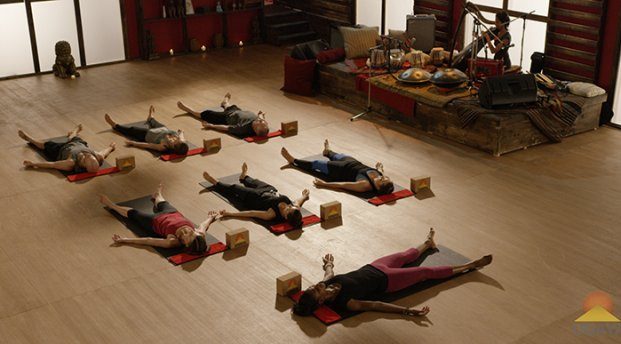I have a friend who on April 27, 2007 was brought back to life after being dead (for long enough to make it real) from an electrocution accident while working for a power company. His report is that in the gap of ‘time’ that he was dead, all that was was darkness and silence. No time. No demands. No self. No identity. No problems. Stories of these experiences are very powerful for us to hear as humans, for there is no denying that in general, we live in a phobia of death and by proxy, the ‘unknown’.
What do you feel when the lights go out? When there is no longer contact with the known World? My experience tells me that ‘no light’ and ‘no contact’ is the base ground, or context in which all experience rests in and upon, rises from, and subsides into. And still to this day, whenever I genuinely consider the end of the life of this body, a real and convincing terror is present. Not in a conscious way, yet it is here and mostly I live in any way possible to avoid that feeling.
I have noticed that there is a trend in popular Yoga in the West to give Shavasana as an option at the end of class. At the same time, Shavasana is talked about as the ‘most important’ pose. Why the turning away from it? What are the motives of taking away the practice of seeing and feeling into the real and unavoidable fact that dissolution of matter and energy is happening, has been happening, and will continue to happen regardless of how much resistance and denial of said certainty is applied? It feels to me that this turning away from the practice of Shavasana is somehow subtly suggesting that death is an option…
…Which doesn’t seem to me a problem in and of itself, but rather a symptom of a deeper underlying issue at play; that the fear of death is motivating our decisions and actions unconsciously.
Look at it. Until we as a race crack this particular life hack and death is really an option [using all available resources to continue living indefinitely] it is going to continue. And likely even after. Nothing is free in this life, and it is likely to cost a lot to keep ‘life’ going indefinitely (see the ‘Borg’ from Star Trek). Again, not a problem. Just saying…
Break down of the word ‘Shavasana’:
Shava – Corpse
Asana – Pose, posture, seat, gesture
The practice
The practice of Shavasana is both the simplest and most challenging Yoga pose. Basically you just lay there. The difficulty comes in when we are faced with the challenge of staying still and letting go.
Shavasana is that practice of being a corpse. Think of it as a dress rehearsal.
Corpses do not generally move. Unless you count zombified necrotic tissue or the continual degradation of cells and atoms into the basic building blocks of further creation [which I do on both accounts].
Shavasana is a practice of relinquishing. Relinquishing control, holding, grasping, and all interference. The form is prone; lying on one’s back. The action is non-action. The doing is non-doing. The choice is singular; to come again and again, actively into the passive state. To be receptive. This requires and calls of us the power of our presence and attention to be active (literally the only active part of the pose).
When we have no power over letting go, we will most likely find that we are not making the choice to be present and attentive.
When we have no power to engage our presence and attention, we will most likely find that we have been taken out of the moment and are lost in an imagination land, or the depths of unconsciousness.
What Shavasana has to teach us:
*** Amongst so much more, these are just a few considerations***
Personally:
- The current limit of our power to let go
- The current limit of our power to stay attentive
- That darkness and silence need not be associated with fear
- “I” am always moving
Universally:
- The temporary Nature of all creation
- That life and death are not separate; they come as two parts of a whole
- That from darkness and silence comes all light and sound
- “I” am always moving
I’ll leave you with a poem that illuminates some of the power and possibility in the practice of Shavasana:
I want to write about faith
About the way the moon rises over cold snow
Night after night
Faithful even in its fading from fullness
Slowly becoming that last curving and impossible sliver of light
Before the final darkness
But I have no faith myself
I do not give it the smallest entry
Let this then, my small form
Like a new moon
Slender, barely open
Be the first prayer
That opens me to faith
-David White
By: Brent Kuecker – Yogi. Musician. Educator.


Write Your Comment
Leave a comment